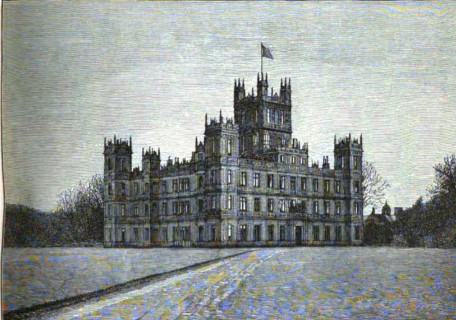
Highclere Castle in Hampshire, England was constructed in the 17th century (around 1679) on the foundations of the original medieval palace of the Bishops of Winchester. Designed by Charles Barry in the Jacobethan style, it would be extensively renovated in the 1840s. The park was designed by Capability Brown in the 18th Century, and is part of the over 5,000 acre estate.
One contemporary account described it thusly:England Described (1818)
The home, which served as a hospital for wounded soldiers during WWI and home to evacuated children from London during WWII, features between 250 and 300 rooms (Highclere Castle).
The first earl of Carnarvon was created in 1793. “The” Royal kalendar and court and city register for England, Scotland, Ireland and the colonies (1819)
During the Regency era, the estate was referred to as Highclere House.
Today, the castle serves as the country seat of the Earl of Carnarvon. You may also recognize it as the main location of Downton Abbey. Lady Carnarvon has a delightful blog that showcases life at Highclere: Lady Carnarvon – The official website of the Countess of Carnarvon.
You can also view some of the sights and sounds of Highclere on its instagram page: Highclere Castle (@highclere_castle) • Instagram photos and videos
Highclere boasts its own ghost:









